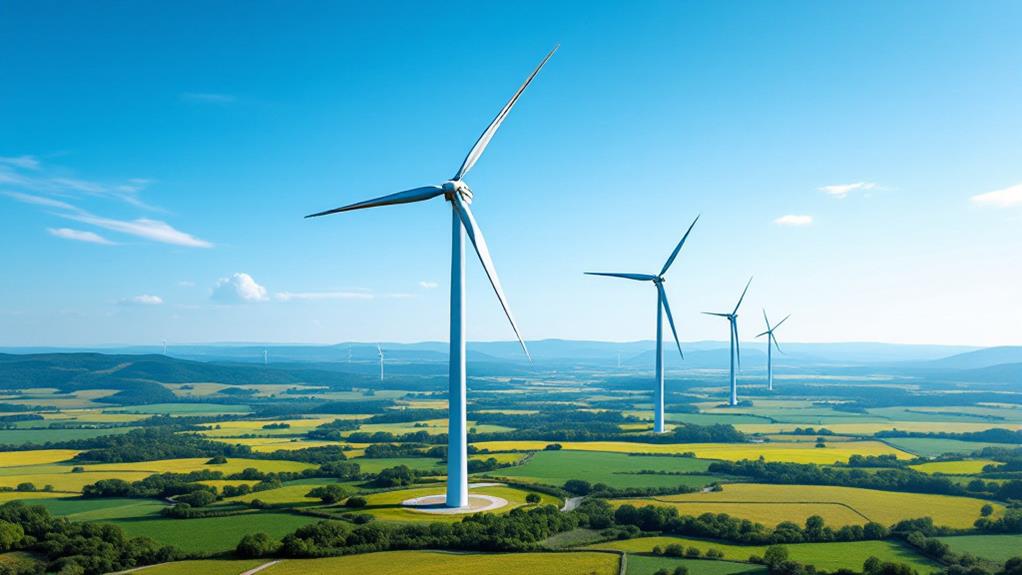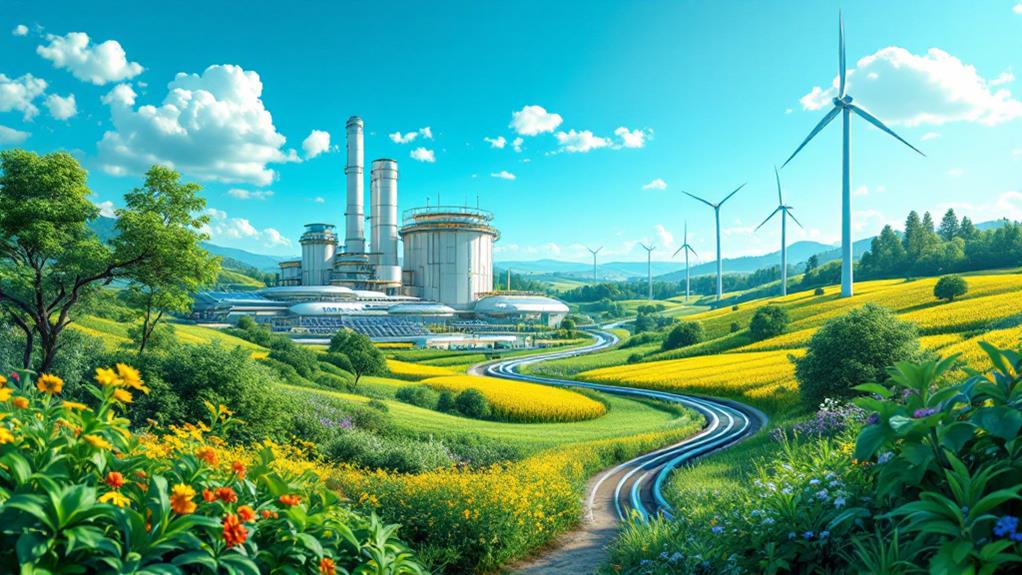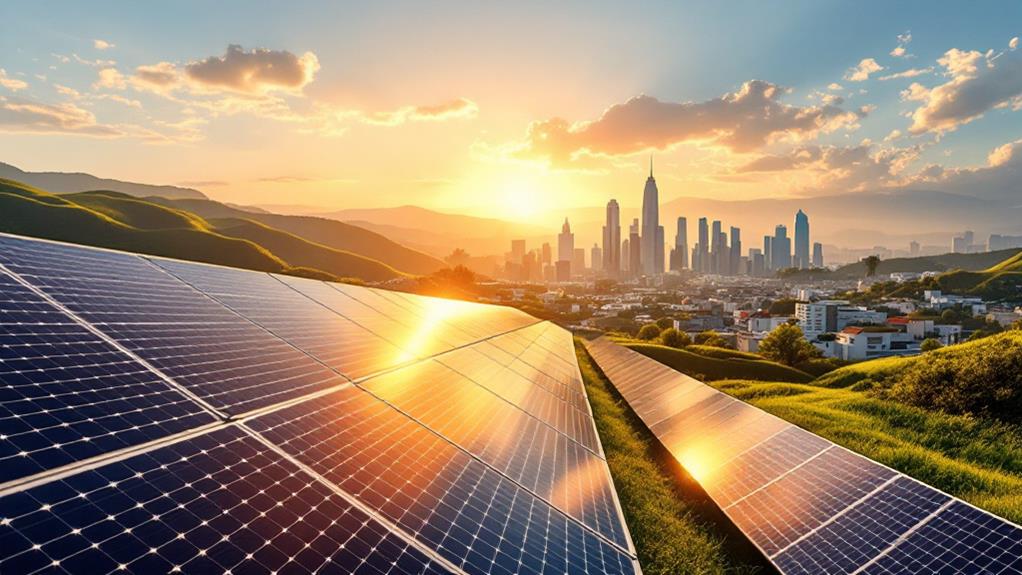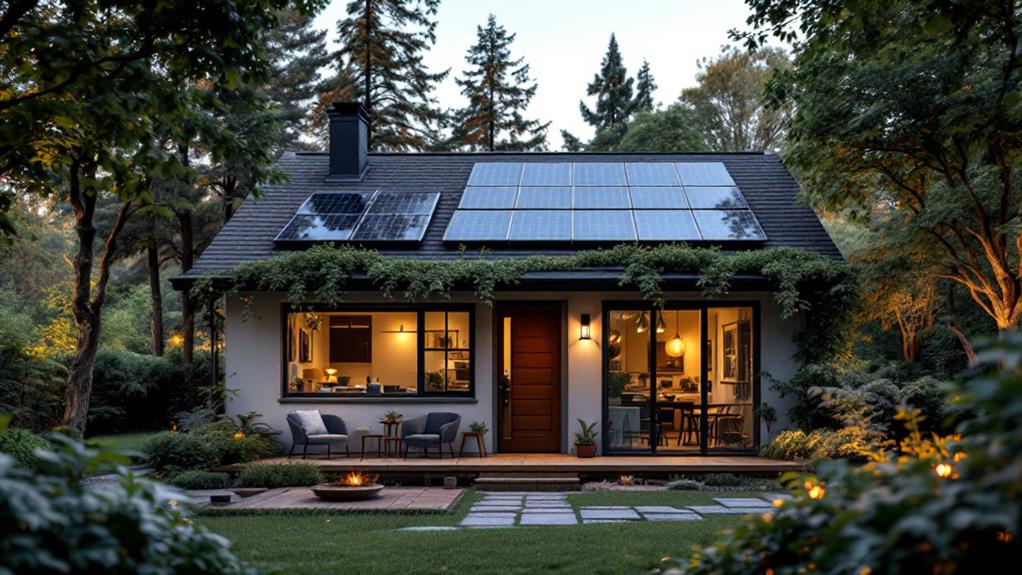How Wind Energy Is Converted to Power: The Science Behind Windmills
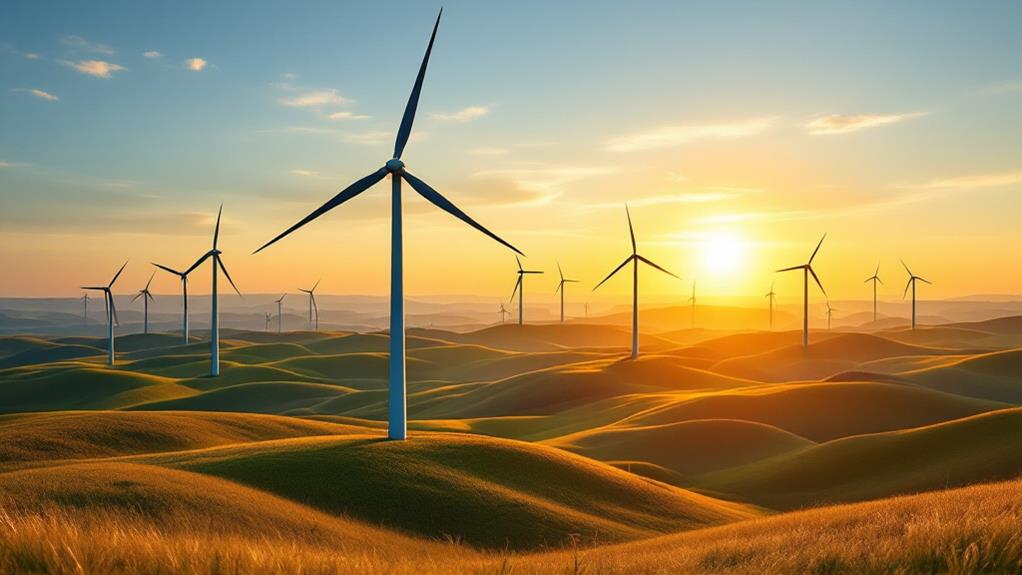
When you investigate how windmills work, you'll see that they harness wind's kinetic energy and turn it into electricity. Think of wind as a natural resource, swept in by solar-induced air movements. As wind strikes the blades, it causes them to rotate, converting kinetic energy into mechanical energy through gears and shafts. This mechanical energy powers a generator, which then creates electricity via electromagnetic induction. The turbine design, especially the blades and generator, plays an essential role in optimizing energy conversion. Continue and uncover even more fascinating details about this efficient and eco-friendly energy solution.
Wind Energy Basics
Have you ever wondered how wind can be transformed into the electricity that powers our homes? It all starts with understanding wind energy, a crucial player in the world of renewable resources. Wind energy is the process of capturing the kinetic energy generated by wind and converting it into electrical power. This renewable resource is abundant and endlessly available, making it a cornerstone of sustainable energy solutions.
You might not realize it, but wind is actually a form of solar energy. The sun unevenly heats the Earth's surface, causing air movement, which we feel as wind. When you harness this wind, you tap into a clean energy source that doesn't deplete natural resources or emit harmful pollutants.
The conversion process begins when the wind's kinetic energy is captured by large structures designed to enhance efficiency. Wind energy is particularly appealing because it can be generated almost anywhere, from open plains to hilltops and even offshore. By using this renewable resource, you help reduce reliance on fossil fuels and lower carbon emissions. Understanding these basics of wind energy sets the stage for exploring the intricate systems that make it all possible.
Anatomy of a Windmill
Understanding the anatomy of a windmill is fundamental for appreciating how these structures transform wind into usable energy. When you examine a windmill, focus on its key components: the blades, the hub, the nacelle, and the tower. Each part plays a vital role in capturing and converting wind energy. Blade design is paramount, as it determines how efficiently wind can be harnessed. The blades are aerodynamically shaped to capture wind and rotate. Their efficiency is influenced by their length and the materials used, often fiberglass or carbon fiber for strength and lightness.
The hub acts as a central point where the blades are attached, connecting them to the nacelle. Inside the nacelle, you'll find the gearbox and generator, which are essential for converting the rotor's rotation into electricity. The tower supports the nacelle and blades, elevating them to capture stronger winds at higher altitudes.
Different turbine types, such as horizontal-axis and vertical-axis wind turbines, vary in design and efficiency. Horizontal-axis turbines are more common, with their characteristic propeller-like blades. Understanding these elements helps you grasp how windmills work, paving the way for sustainable energy solutions.
Kinetic to Mechanical Conversion
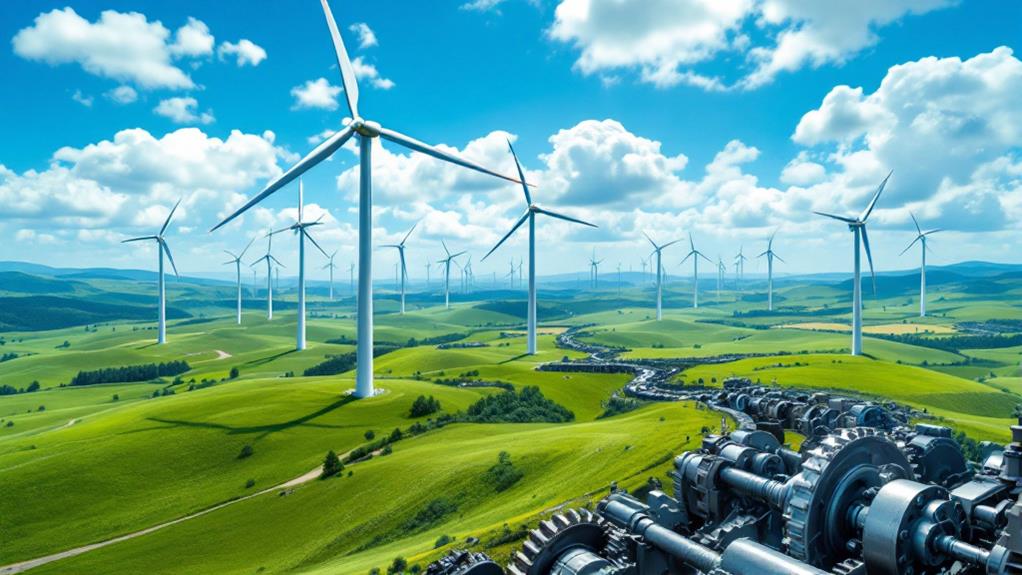
Kinetic energy, harnessed from the wind, becomes mechanical energy in a windmill through an ingenious conversion process. When the wind blows, it transfers kinetic energy to the windmill's blades, causing them to spin. This motion is the initial step in converting raw wind power into something more tangible. As the blades turn, they transfer their kinetic energy into a rotating motion, effectively setting the gears and shafts within the windmill into action.
Now, let's focus on the mechanical work. The spinning blades are connected to a rotor, which turns the main shaft. This shaft is the backbone of the conversion process, transforming the rotational motion into mechanical work. As the shaft spins, it drives a series of gears that increase the rotation speed. This gearing system is vital because it amplifies the initial kinetic energy, maximizing the mechanical output that can be used for different applications.
Through this process, the windmill efficiently converts the abundant kinetic energy of the wind into mechanical work, ready to be used in distinct forms. It's this seamless conversion that sets the stage for further transformation into usable power.
Generating Electricity
Once the mechanical energy is harnessed from the spinning shaft, the next step is generating electricity. You'll find that the turbine design plays a vital role in this process. Inside the wind turbine, a generator—often an induction or synchronous type—converts this mechanical energy into electrical energy. The generator contains magnets and coils of wire that interact as the shaft spins, creating an electric current through electromagnetic induction.
Different turbine designs can influence how effectively energy is converted. For example, some turbines use gearboxes to increase the rotational speed before reaching the generator. Others use direct drive systems, eliminating the gearbox and reducing maintenance needs. Each design choice impacts efficiency and reliability, so understanding these differences is fundamental.
Once electricity is generated, it's critical to think about power storage. Wind doesn't blow consistently, so having a way to store excess power for times when wind is absent can guarantee a stable energy supply. You might use batteries or other storage technologies to capture this electricity. Then, it can be released when needed, assuring that the energy generated by your turbine design is efficiently utilized, providing a reliable power supply to meet demand.
Efficiency and Optimization
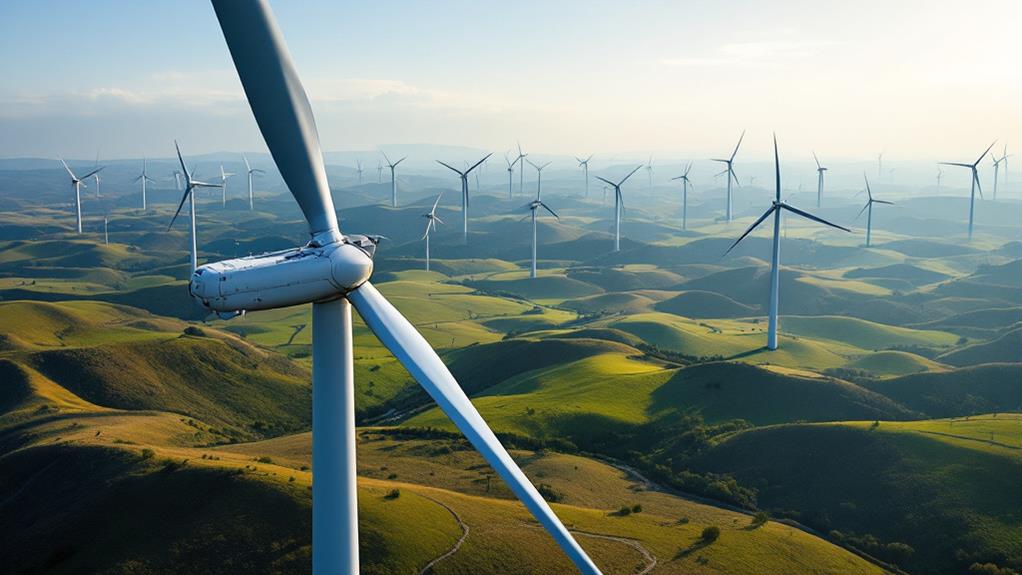
To get the most power from wind energy, it's important to focus on efficiency and optimization. The right turbine design is significant; it directly affects how much wind energy is captured and converted into electricity. You'll want to take into account blade shape and material to enhance efficiency. Good turbine design guarantees that even in low wind speeds, your windmill can still perform effectively, making the most of every gust.
Energy storage is another important component. Imagine capturing excess energy during a windy day and saving it for calmer periods. By integrating efficient storage systems, you guarantee a steady power supply regardless of the wind's mood. Here's how you can visualize the process:
- Sleek blades slicing through the air, capturing every possible breeze.
- Sturdy towers standing firm, housing mechanisms that enhance energy conversion.
- Silent batteries humming with stored power, ready to release it when needed.
Efficiency doesn't just stop with capturing wind. It's about making certain that every watt is used wisely, and no energy gets wasted. By focusing on these key aspects, you'll refine your wind energy system and get the most out of this renewable resource.
Technological Innovations
Harnessing the power of technological innovations transforms the wind energy sector into a dynamic and efficient source of renewable energy. You're witnessing breakthroughs that redefine what's possible in this field. Modern turbine design now emphasizes efficiency and reliability, using lighter materials and aerofoil-shaped blades to capture more wind energy. This means you get more power from the same wind conditions, maximizing output and minimizing costs.
You're also seeing the integration of smart grids, which plays a vital role in managing the distribution of wind energy. Smart grids use advanced monitoring and control systems to balance supply and demand more effectively. This guarantees that the energy generated is efficiently distributed, reducing wastage and improving sustainability. With smart grids, you can seamlessly integrate wind energy into the broader power network, enhancing stability and resilience.
Another innovation is in predictive maintenance technology. Using sensors and data analytics, you can anticipate and address potential issues in turbines before they lead to costly failures. This proactive approach reduces downtime and extends the lifespan of wind turbines, making them a more viable long-term investment. With these advancements, wind energy becomes not only more accessible but also more dependable.
Environmental Impact
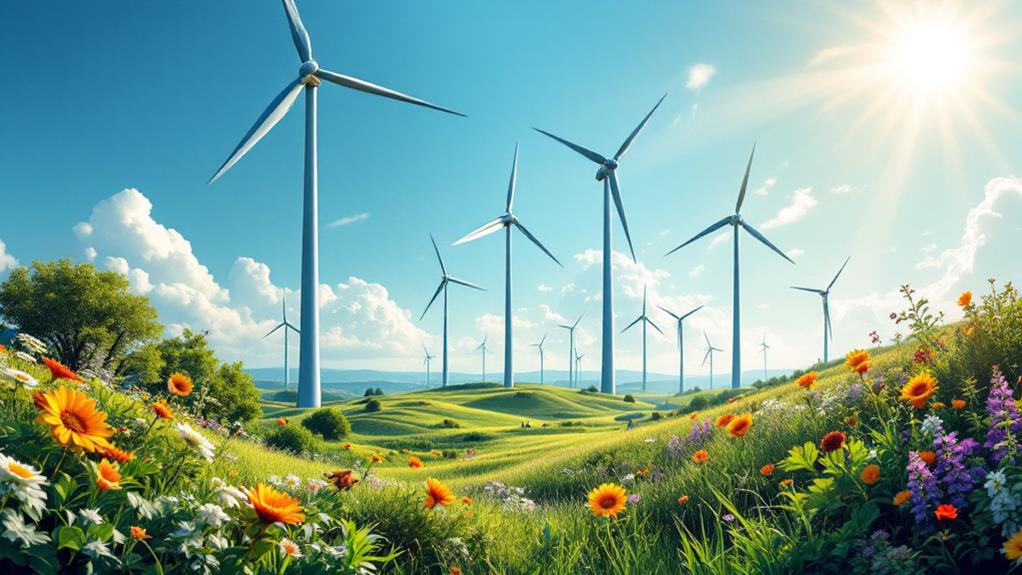
As technological innovations propel the wind energy sector forward, it's important to evaluate the environmental impact of these advancements. Wind energy is celebrated for its low carbon footprint, but it's not without its challenges. By understanding these, you can weigh its benefits against potential drawbacks.
- Wildlife Effects: Wind turbines can pose threats to birds and bats. Their spinning blades have been known to disrupt migration paths and habitats, leading to fatalities.
- Noise Pollution: While not as loud as other industrial activities, wind farms can generate a continuous, low-level hum. This noise can impact local communities and wildlife, altering natural behaviors.
- Land Use: Wind farms require significant space. Placing turbines in rural or undeveloped areas might conflict with farming, recreation, or wildlife conservation efforts.
When considering wind energy, it's important to recognize these factors. Although the carbon footprint of wind power is considerably lower than fossil fuels, balancing it with wildlife protection and community well-being is significant. By addressing these concerns, you can help guarantee that wind energy remains a sustainable choice for the future, minimizing its environmental impact while maximizing its benefits.
